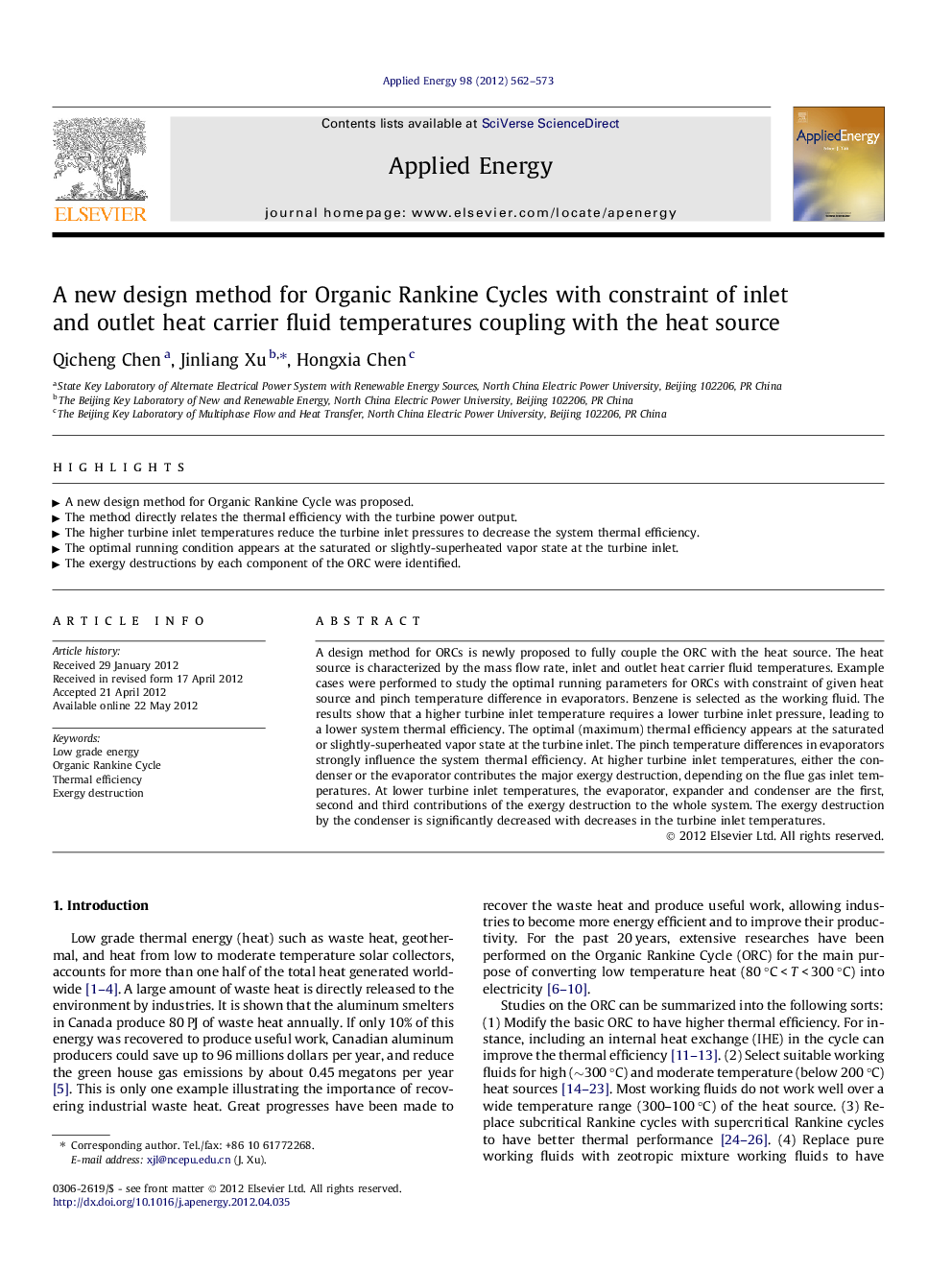| Article ID | Journal | Published Year | Pages | File Type |
|---|---|---|---|---|
| 243242 | Applied Energy | 2012 | 12 Pages |
A design method for ORCs is newly proposed to fully couple the ORC with the heat source. The heat source is characterized by the mass flow rate, inlet and outlet heat carrier fluid temperatures. Example cases were performed to study the optimal running parameters for ORCs with constraint of given heat source and pinch temperature difference in evaporators. Benzene is selected as the working fluid. The results show that a higher turbine inlet temperature requires a lower turbine inlet pressure, leading to a lower system thermal efficiency. The optimal (maximum) thermal efficiency appears at the saturated or slightly-superheated vapor state at the turbine inlet. The pinch temperature differences in evaporators strongly influence the system thermal efficiency. At higher turbine inlet temperatures, either the condenser or the evaporator contributes the major exergy destruction, depending on the flue gas inlet temperatures. At lower turbine inlet temperatures, the evaporator, expander and condenser are the first, second and third contributions of the exergy destruction to the whole system. The exergy destruction by the condenser is significantly decreased with decreases in the turbine inlet temperatures.
► A new design method for Organic Rankine Cycle was proposed. ► The method directly relates the thermal efficiency with the turbine power output. ► The higher turbine inlet temperatures reduce the turbine inlet pressures to decrease the system thermal efficiency. ► The optimal running condition appears at the saturated or slightly-superheated vapor state at the turbine inlet. ► The exergy destructions by each component of the ORC were identified.
